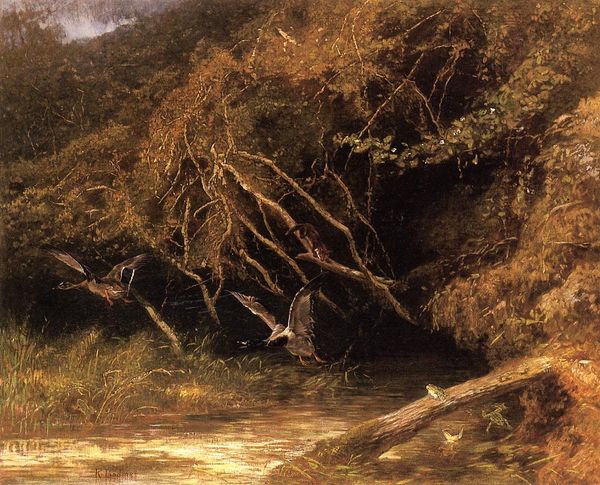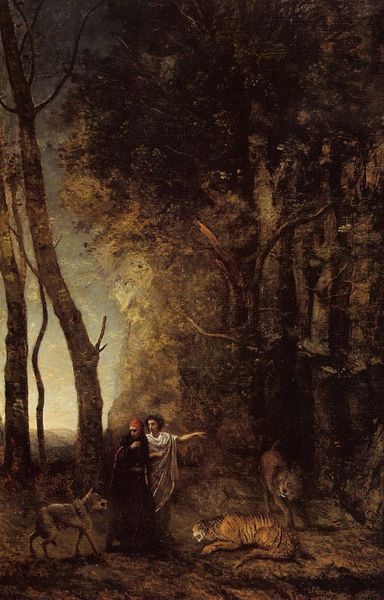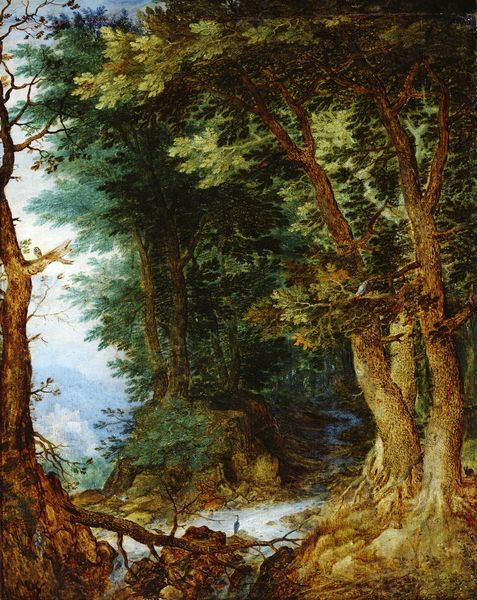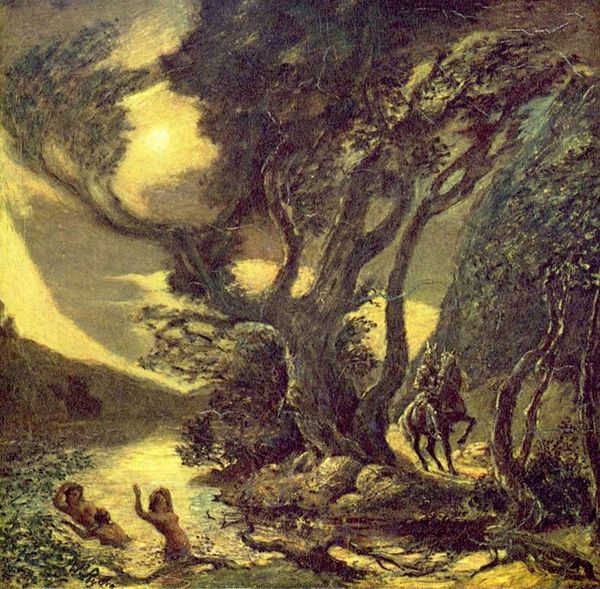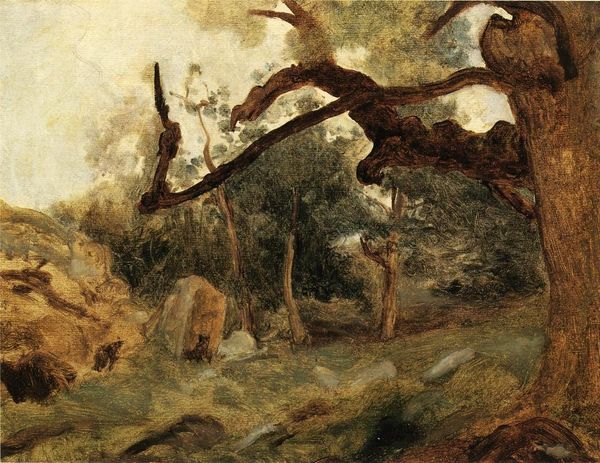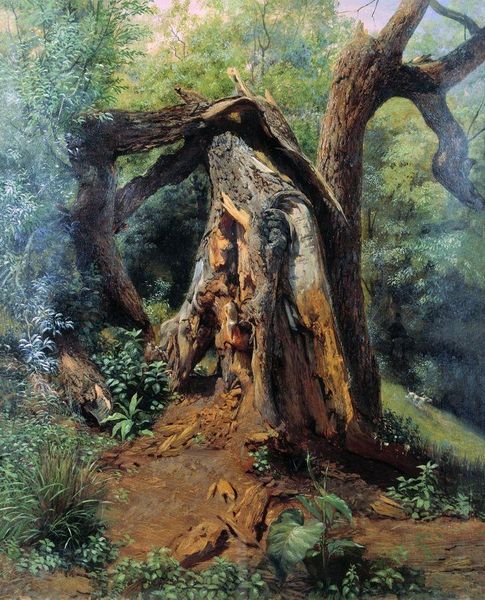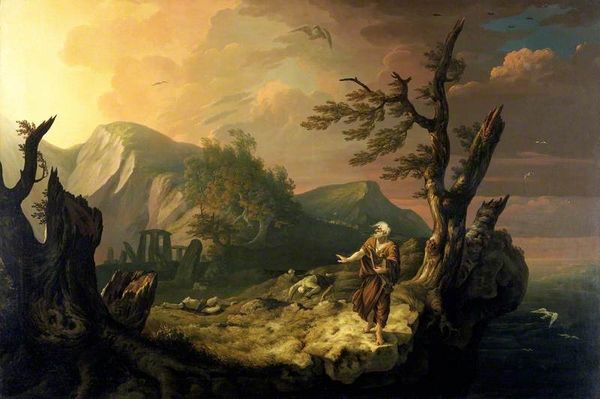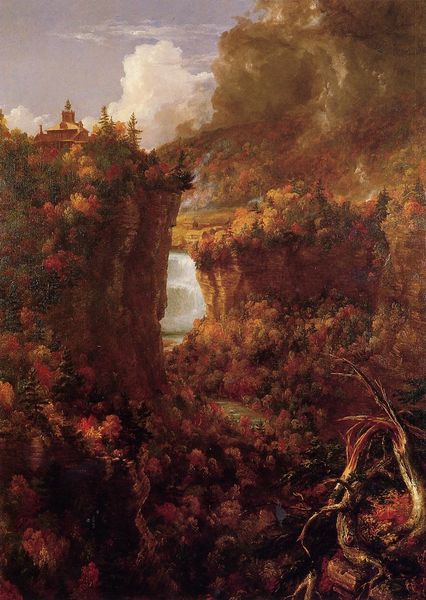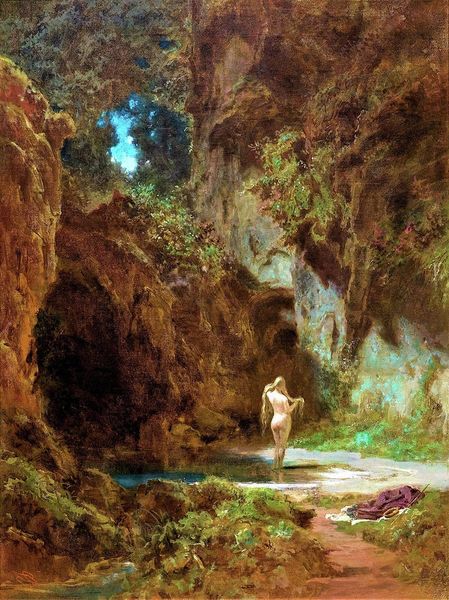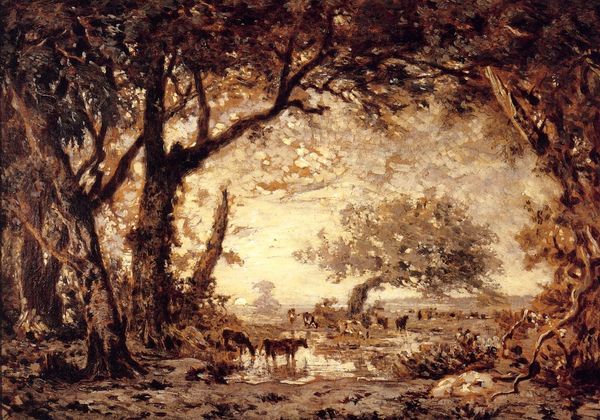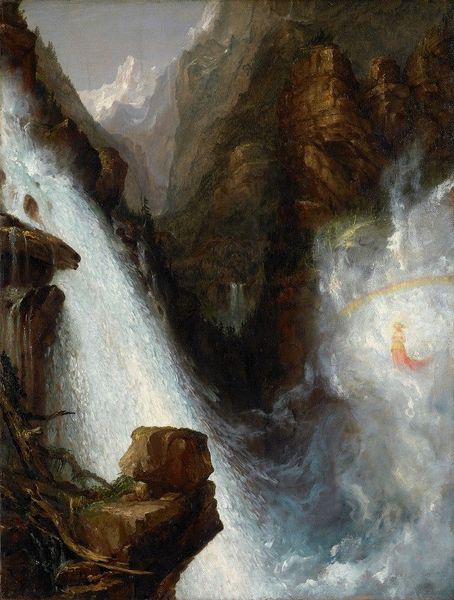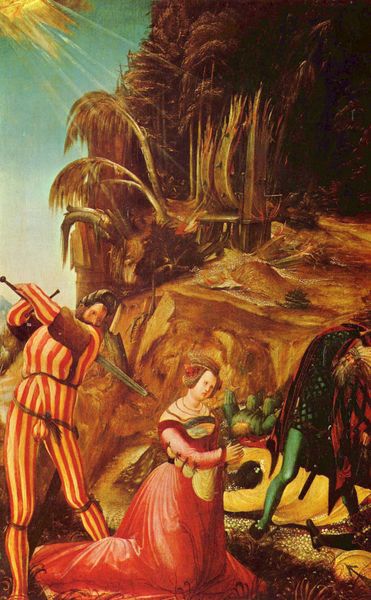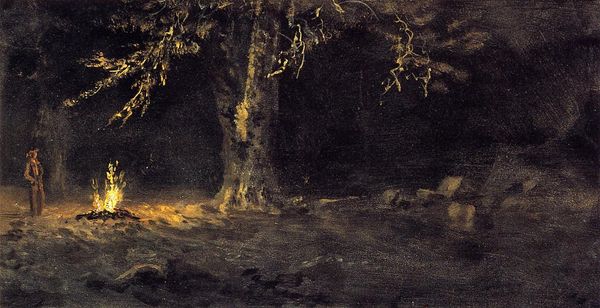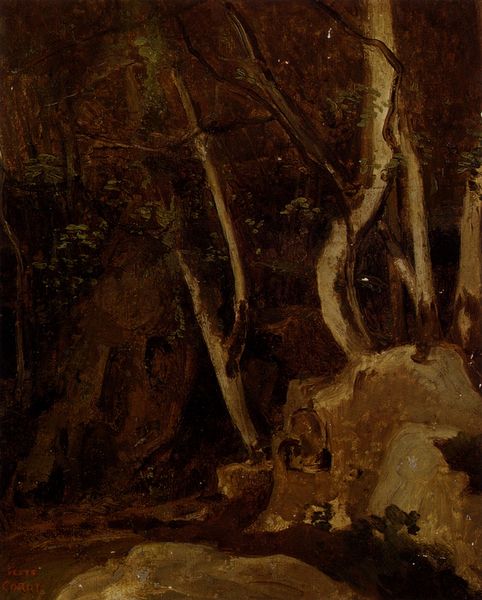![Along the Wabash [ Left ] by Karl Bodmer](/_next/image?url=https%3A%2F%2Fd2w8kbdekdi1gv.cloudfront.net%2FeyJidWNrZXQiOiAiYXJ0ZXJhLWltYWdlcy1idWNrZXQiLCAia2V5IjogImFydHdvcmtzLzQzZDJjNDRhLTY0ZDQtNDY2OC1iMzBiLTNiY2RiOGNhNmZlOS80M2QyYzQ0YS02NGQ0LTQ2NjgtYjMwYi0zYmNkYjhjYTZmZTlfZnVsbC5qcGciLCAiZWRpdHMiOiB7InJlc2l6ZSI6IHsid2lkdGgiOiAxOTIwLCAiaGVpZ2h0IjogMTkyMCwgImZpdCI6ICJpbnNpZGUifX19&w=1200&q=75)
mixed-media, print, woodcut
#
tree
#
mixed-media
#
animal
# print
#
landscape
#
forest
#
plant
#
romanticism
#
woodcut
#
natural-landscape
#
men
#
naturalism
#
mixed medium
#
mixed media
#
watercolor
Copyright: Public domain
Editor: Here we have "Along the Wabash [Left]," a mixed-media print including woodcut and watercolor by Karl Bodmer, created in 1834. I'm struck by the contrasting textures, especially how the detail in the foliage creates a really immersive, almost tactile experience. What do you see in this piece? Curator: I see a carefully constructed image deeply embedded in the power dynamics of its time. Bodmer, as a European artist, depicted this “natural landscape” along the Wabash River, romanticizing the American frontier. But whose story is missing? Editor: The Indigenous peoples who lived there? Curator: Exactly. This image participates in the visual rhetoric of Manifest Destiny, framing the land as empty and available for colonial expansion. The pigs rooting in the foreground symbolize domesticity, subtly reinforcing a European vision of land use and ownership. The lush detail you noticed draws the viewer in, inviting them to partake in this vision. It's crucial to recognize that such idyllic depictions served to erase Indigenous presence and justify dispossession. What are your thoughts about this interpretation? Editor: I hadn't considered the active role that landscape art could play in justifying colonial agendas. So, the beauty is… deceptive, almost? Curator: Precisely. The beauty is strategically employed. This piece serves as a potent reminder that even seemingly benign landscapes can be powerful ideological tools. Editor: Thank you. I will never look at landscape art the same way again. Curator: Nor I. It’s vital that we interrogate art history and learn from the past.
Comments
No comments
Be the first to comment and join the conversation on the ultimate creative platform.
